Candy Van Buskirk on Learn Outside and Disrupting the Status Quo in Education
Key Points
-
Our New Pathways campaign hopes to link every American secondary student to opportunity and economic mobility by helping them find a supported pathway to employment, entrepreneurship, and contributing citizenship.
-
The Career Academy Network of Public Schools focuses on experiential learning and has developed multiple pathways for students.
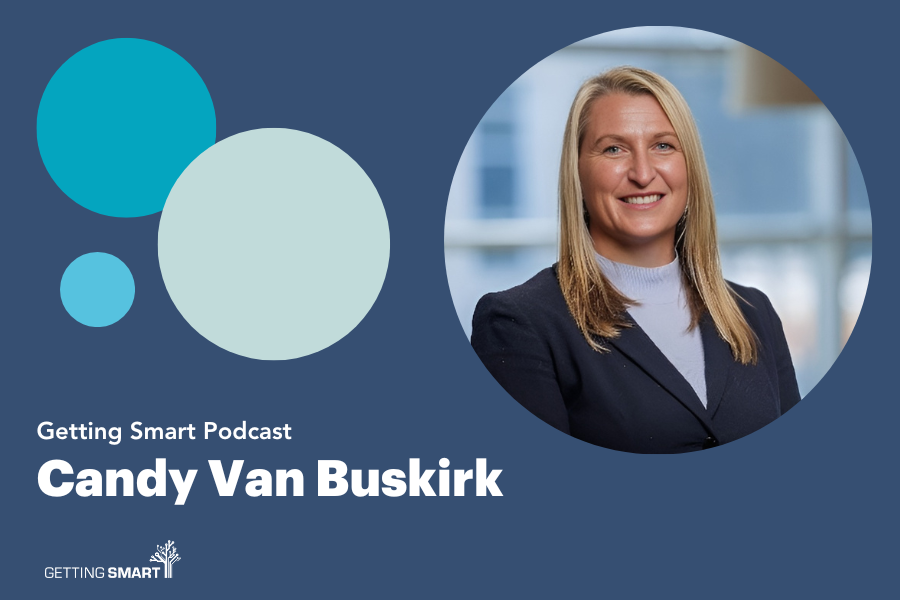
On this episode of the Getting Smart Podcast, Tom Vander Ark talks to Dr. Candy Van Buskirk, Assistant Superintendent of the Career Academy Network in South Bend, Indiana, to discuss her new book, ‘Learn Outside. They talk about the innovative educational strategies at Career Academy Network and the goals of the new pathways campaign aiming to link students to economic mobility, focusing on experiential learning through career academies.
Dr. Van Buskirk shares the development of the Career Academy Network, the integration of STEM, robotics, and project-based learning starting from K-5, and numerous partnerships with institutions like Ivy Tech and Notre Dame for dual enrollment. She also talks about her research on experiential learning and highlights examples from other exemplary schools across Southern California. They explore and discover the importance of partnerships and collaboration in advancing education and creating pathways for students to achieve high-wage careers without necessarily going the traditional college route.
Transcript
- Introduction
- Career Academy Network: Origin and Vision
- Experiential Learning and Dual Enrollment
- Insights from Leading Educational Models
- Concluding Thoughts and Future Direction
Introduction
Tom Vander Ark: The goal of our new pathways campaign is to link every American secondary student to opportunity and economic mobility by helping them find or co-create an intentional, accelerated, supported pathway to employment, entrepreneurship, and contributing citizenship. These new pathways are often expressed as career academies and always full of real-world learning and experiential learning. I’m Tom Vander Ark. You’re listening to the Getting Smart Podcast, and I’m joined today by my friend Candida Van Buskirk.
Candy Van Buskirk: Hi, thanks for having me today.
Tom Vander Ark: It’s so good to have you on the show. Candy is the Assistant Superintendent of the Career Academy Network in South Bend, Indiana, and she’s got a great new book out called Learn Outside: Rising Together to Disrupt the Status Quo in Education. Candy, we usually see each other at conferences. It seems like mostly in San Diego.
Candy Van Buskirk: Not a bad place to run into each other.
Tom Vander Ark: Well, I’m glad we had a chance to check out your new book and talk about it a little bit. You’ve been in South Bend leading this very cool place called Career Academy for a few years.
Career Academy Network: Origin and Vision
Tom Vander Ark: Tell us about that because I think it’s central to the ideas behind the book. What’s Career Academy? What’s the origin story, and what do kids do there?
Candy Van Buskirk: Yeah, so the Career Academy Network of Public Schools was started 12 years ago. Our board president, Larry Garatoni, founded the school. He has a passion for economic development within the South Bend community because it’s his home community and knows that economic development starts with human capital. So, it starts with our students. It starts with education. By trade, he is an engineer and had a passion for looking at manufacturing and careers that are high-wage-earning positions within the community. Developing an educational opportunity for students in the South Bend area to obtain those high-wage-earning positions, he knew that we needed to do education differently.
Larry, to this day, is 85 years old, full of passion, full of drive, very generous, and just loves his community and the students. He founded the Career Academy Network of Public Schools, starting with secondary education. We began with grades 6-12 and then added an elementary school, Success Academy, for K-5. Since then, we’ve added another elementary school this past year in partnership with the Boys and Girls Club. We also added another high school called the Portage School of Leaders. Each entity has its niche, but the foundation of all the schools is leading with experiential learning, allowing students to learn who they are and what pathways they are passionate about so that they can lean into those pathways.
We are STEM and robotics-focused. Students in K-5 start coding with Tinkercad and continue roughly through middle school. In middle school, we start with something called Fusion 360. We have precision machining, engineering, computer science, biomedical sciences, and several other pathways that students can start exploring in elementary school. However, we know that our learners are constantly changing and evolving, so by the time they get to high school, they may have switched pathways. This approach allows them to dive in and identify different career areas beyond the standard doctor, teacher, lawyer roles. Our students are looking at marketing, biomedical sciences, engineering, manufacturing, welding, and all the jobs within those fields.
Tom Vander Ark: And every one of those pathways is packed with dual enrollment opportunities, credentialing opportunities, and work-based learning opportunities.
Candy Van Buskirk: Yes, they absolutely are. I appreciate you bringing that up. We have a current senior who has his certification in welding, which is a national certification. He’s going to have several opportunities. Right now, he’s doing work-based learning while he’s in high school with South Bend Ironworks. He was one of the few people who had the NIMS certification, and he’s working with older adults. He had the opportunity to negotiate his salary because he was making minimum wage, and with his certification, he realized that individuals without the certifications he had were making significantly higher. They needed him with his certification. So, at the age of 18, he’s making roughly $40 an hour and was able to negotiate that.
Experiential Learning and Dual Enrollment
Tom Vander Ark: Say a little more about middle school career exploration. What kinds of activities do Career Academy students do in the middle grades that help them enter high school with an initial sense of direction?
Candy Van Buskirk: In middle school, students have the opportunity to explore each pathway. Currently, we offer seven different pathways. They test drive each one of those pathways and go into what we call our makerspace with their classrooms on project-based learning. They learn welding, precision machining, computer science, biomedical sciences, and entrepreneurship because we want to develop entrepreneurs and encourage innovative, creative, and critical thinking. They also have the opportunity to develop projects in those pathways through design thinking, identifying where they are most passionate and gifted. They have to choose two pathways in high school, so the middle school experience is crucial for them to test drive and make informed decisions. In K-5, they don’t have pathways per se, but they are introduced to all the different pathways through makerspace, computer science, and coding classes.
Tom Vander Ark: Candy, what’s your dual enrollment strategy? Do you work with Ivy Tech and any partnerships with that well-known university in your town?
Candy Van Buskirk: Yes, we partner with Ivy Tech for dual enrollment. We also have partnerships with IUSB and Notre Dame, particularly within our entrepreneurship and MOXIE programs. Notre Dame supports various areas in our district. One significant piece is Notre Dame offers a full-ride, full-tuition scholarship to 10 students in Saint Joe County based on their academics. Currently, we have three students at the University of Notre Dame on full academic scholarships.
Tom Vander Ark: Candy, while you’ve been a leader at Career Academy, you were working on finishing your PhD and doing research on experiential learning. Does that have anything to do with this new book called Learn Outside? Are we reading your dissertation here, or is there more to it?
Candy Van Buskirk: You’re not reading my dissertation. However, a couple of years ago, I was in a school district that was 80% English language learners in the Grand Rapids area. I started looking into online learning and English language learners and their SAT scores. Within that district, we were also focused on competencies and project-based learning. That’s where I initially had the aha moment that we need a shift in education. I started seeing success in student engagement and agency when we incorporated competencies and project-based learning. When I became a leader at Career Academy Network of Public Schools, it was a natural fit because it aligned with the work I had already started. We’ve now been able to dive deeper and highlight the hard work of all the leaders and educators within the district, empowering them and giving them autonomy in the classroom.
What we found with project-based learning is that when teachers are given autonomy, they become more passionate about their work. In the book, I talk about our future lab coordinator, Dave Ebersole, and his passion for teaching robotics and working with 3D printers. When teachers are passionate, it creates an exciting environment for students.
Tom Vander Ark: Candy, what I really appreciate about you and the Career Academy team is that you are learners. You are always asking good questions, trying to find out who’s doing things better. You have made a habit of researching and visiting great schools. I love that you brought many of those stories together in your new book, Learn Outside. Let’s recap a few of those stories.
Insights from Leading Educational Models
Tom Vander Ark: What does Samueli Academy do, and how do they bring experiential learning to life?
Candy Van Buskirk: Leaning into Samueli Academy, one of my former students from 12-13 years ago is currently a teacher there. When she started, she would call and tell me about the incredible project-based learning they were doing, even though she hadn’t done it before. Our leadership team had the opportunity to visit several schools in California between LA and San Diego last year, including Samueli Academy.
Tom Vander Ark: I think it’s a member of the New Tech Network, so they have a lot of team-taught, double-block, project-based units of study.
Candy Van Buskirk: Yes, and they have incredible partnerships with different companies. Their students do real-world work in graphic design, partnering with companies, increasing student engagement. They are also in partnership with the foster care system of Orange County, providing on-campus dormitories for foster students. Their foster students live in the dorms Monday through Friday and spend weekends with families. This setup ensures students are engaged in real-world learning and fosters ownership of their projects.
Tom Vander Ark: For our listeners, if you’re interested in checking out great residential programs, we recommend Samueli Academy, SEED Academy in Los Angeles, and Da Vinci RISE, which serves housing-insecure and foster youth as well as justice-involved youth. A couple of San Diego schools made your book. You mentioned High Tech High and Larry Rosenstock’s contribution. You also talked about David Miyashiro and his leadership at Cajon Valley. Any experiential learning nuggets from either of those sites you want to share?
Candy Van Buskirk: Larry and David are top-notch educational leaders breaking the curve. Larry started High Tech High years ago, setting a cutting-edge example. Bostonia Global has something called the RIASEC, an interest inventory from kindergarten through high school, allowing students and educators to understand their interests and guide them into different paths. Their World of Work program lets students learn about careers from a young age through internships and hands-on experiences.
Tom Vander Ark: Sometimes finding out what they don’t enjoy doing is just as important.
Candy Van Buskirk: Absolutely. The leadership at Cajon Valley, including Narell and David Miyashiro, has developed the World of Work curriculum, borrowing strategies from Big Picture and One Stone in Boise, Idaho. They have been scouring the country for the best models, much like we do.
Tom Vander Ark: You also mentioned Michael Matsuda in Anaheim. We just had him on the podcast a few weeks ago. What would you say about the work he’s doing in Anaheim?
Candy Van Buskirk: The work in Anaheim is incredible, given the size of the district and the number of educators leading with fidelity. They are achieving remarkable results in competencies and work-based learning.
Tom Vander Ark: Candy, I’m beginning to think you only study schools in Southern California. Is that a winter strategy to get out of Indiana for a few weeks?
Candy Van Buskirk: You’re catching on. Or maybe it’s Tom who likes being in Southern California because those are the schools you recommend to me.
Tom Vander Ark: I was just visiting schools in San Diego yesterday, so you could be right. The third chapter of your book is about unleashing wonder. What are some examples of unleashing wonder, maybe in the elementary grades?
Candy Van Buskirk: In our district, we just opened a K-5 school called Success Academy at Boys and Girls Club. The building is owned by the Boys and Girls Club, and they provide youth development instructors who work with classroom teachers. Monday through Thursday is project-based, competency-based learning, and on Fridays, students go into the community to apply what they’ve learned. For example, our second and third graders are working on a hydroponics project, visiting local farms, and growing lettuce in their classroom. This partnership unleashes wonder by connecting students with real-world experiences.
Tom Vander Ark: I’ll give a shout-out to the Outdoor Discovery Center in Holland, Michigan, a 25-year-old non-profit that creates place-based and experiential learning experiences K-12. They work with schools, create experiences, and manage 2,000 acres, providing after-school and summer programs. Why lead with Learn Outside in your book? What’s the big idea behind it?
Candy Van Buskirk: We may have physical walls in our classrooms, but we can learn beyond those walls. Learn Outside is about thinking outside the box, engaging students, developing student agency, and providing opportunities for high-wage positions after high school. Whether students choose college or jump into careers, we must prepare them differently than how we sat in classrooms years ago.
Concluding Thoughts and Future Directions
Tom Vander Ark: We’re talking to Dr. Candy Van Buskirk, Assistant Superintendent at Career Academy in South Bend, Indiana, and author of Learn Outside. Candy, as we close, Chapter six has great advice for ed leaders, but what’s a thought or two for those earlier in the journey? How and where do you get started with experiential learning?
Candy Van Buskirk: Take one bite at a time. Start with a growth mindset, rethink your classroom setup, or begin with one project. Don’t overwhelm yourself by trying to do everything at once. It develops over time through collaboration. Just take that first step.
Tom Vander Ark: Candy, anyone you want to recognize or acknowledge who has helped you on this journey, particularly with this book?
Candy Van Buskirk: I want to thank Larry Garatoni, our board president, for allowing me to share our district’s story. Jeremy Lugbell, our superintendent, has been a great collaborator and supporter. I also want to acknowledge Michael Fullen and you, Tom, for being mentors and providing valuable input.
Tom Vander Ark: I’m so glad you connected with Fullen. I enjoy learning from him about promoting experiential learning worldwide. It’s great to catch up this way. I hope we can see each other live and in person, maybe on a school visit soon.
Candy Van Buskirk: Come to South Bend. It’s warm.
Tom Vander Ark: I was with Scott Bess yesterday, the founder of Purdue Polytechnic. I know he has a great school in South Bend.
Candy Van Buskirk: Yes, he does. Our superintendent, Jeremy Lugville, is on a high school redesign team with Katie Jenner, and Scott Bess is part of that. Secretary Jenner is one of America’s great ed leaders, certainly a top chief. The state board recently voted on a new diploma pathway that will support experiential learning at schools like Career Academy. I appreciate Dr. Jenner’s leadership, Scott Bess, and other state leaders creating new pathways in Indiana. It’s a great place to innovate right now.
Tom Vander Ark: Thanks to Candy Van Buskirk, author of Learn Outside. Go get it; it’s a great book.
Bio:
Candida (Candy) Van Buskirk is the Assistant Superintendent at Career Academy Network of Public Schools in South Bend, Indiana and is the author of Learn Outside: Rising Together to Disrupt the Status Quo in Education.
Links:
- Dr. Candida Van Buskirk
- Learn Outside
- Career Academy Network of Public Schools
- Samueli Academy
- SEED Academy (Los Angeles)
- Da Vinci RISE
- High Tech High
- Cajon Valley
- Larry Rosenstock
- David Miyashiro
- Bostonia Global
- RIASEC
- Recent Ed Hidalgo Blog
- World of Work
- Nerel Winter
- ASA
- One Stone Growth Transcript
- Michael Matsuda Podcast
- Museum School in Grand Rapids
- Michael Fullan
- Scott Bess
- Purdue Polytechnic
- Dr. Katie Jenner
- Indiana Diploma Pathway



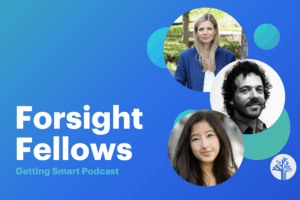


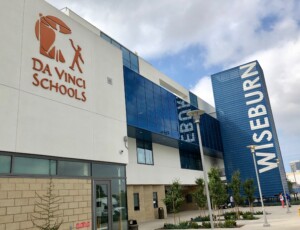
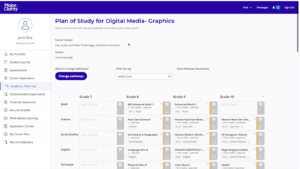
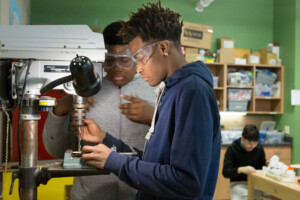
0 Comments
Leave a Comment
Your email address will not be published. All fields are required.